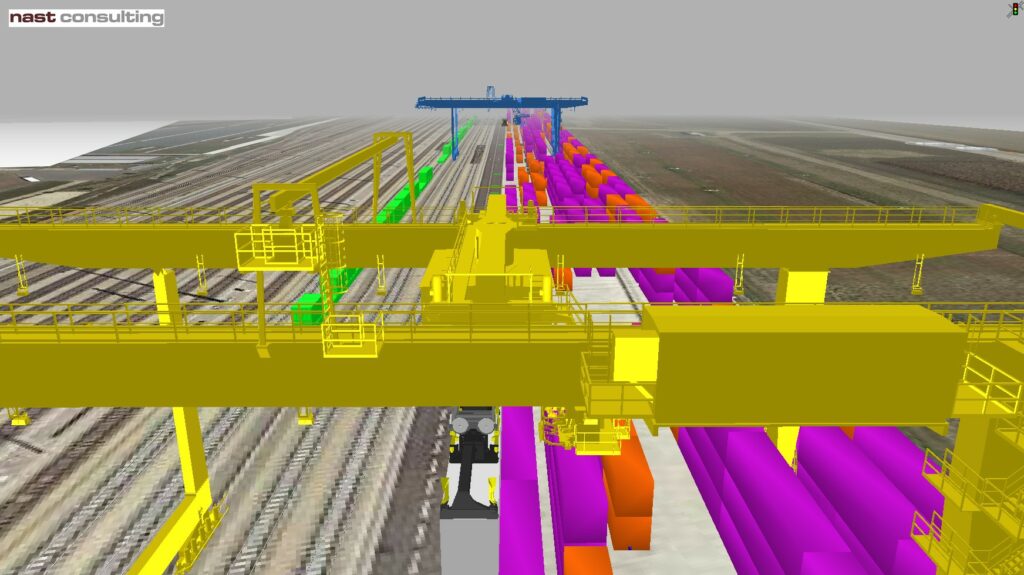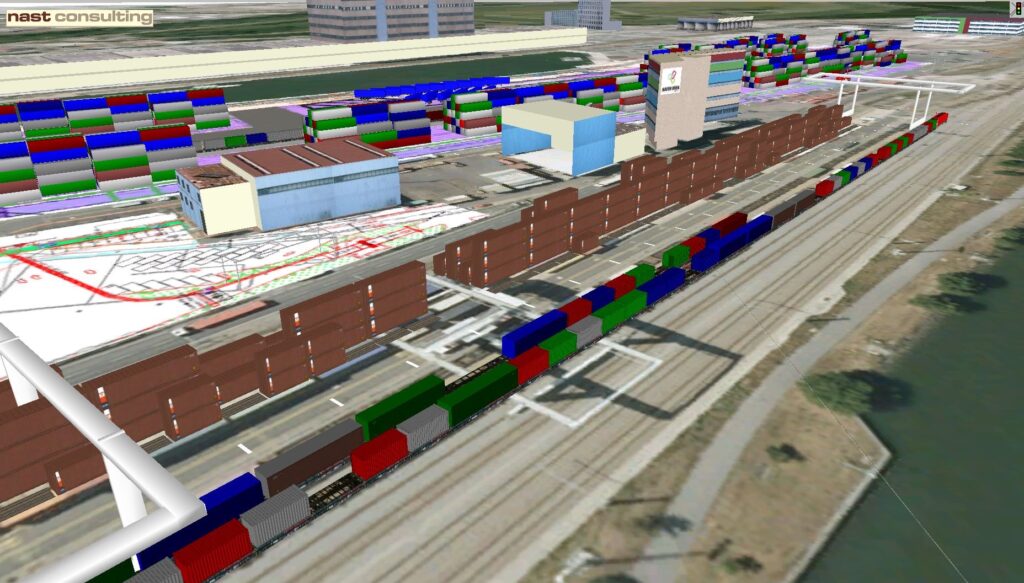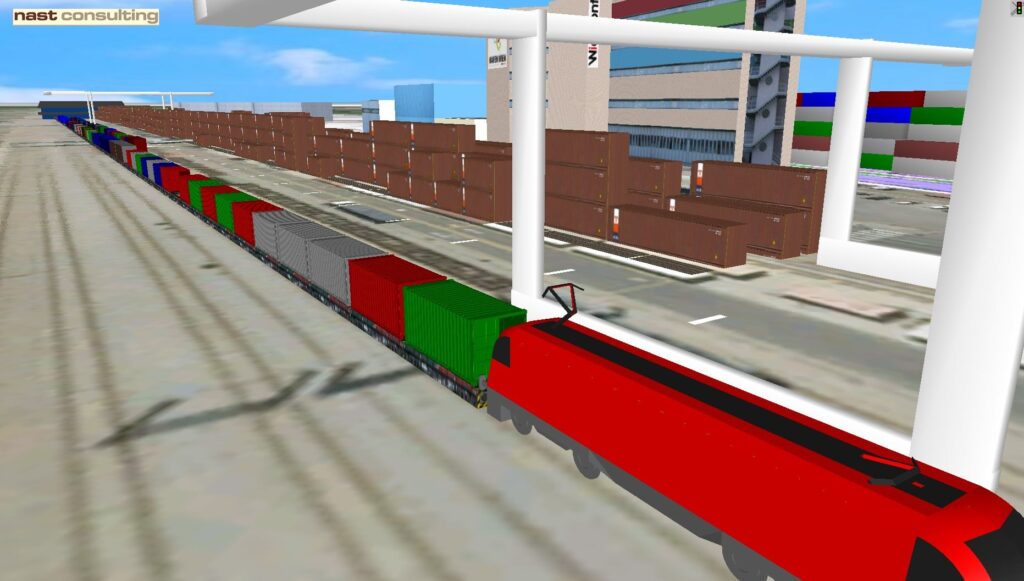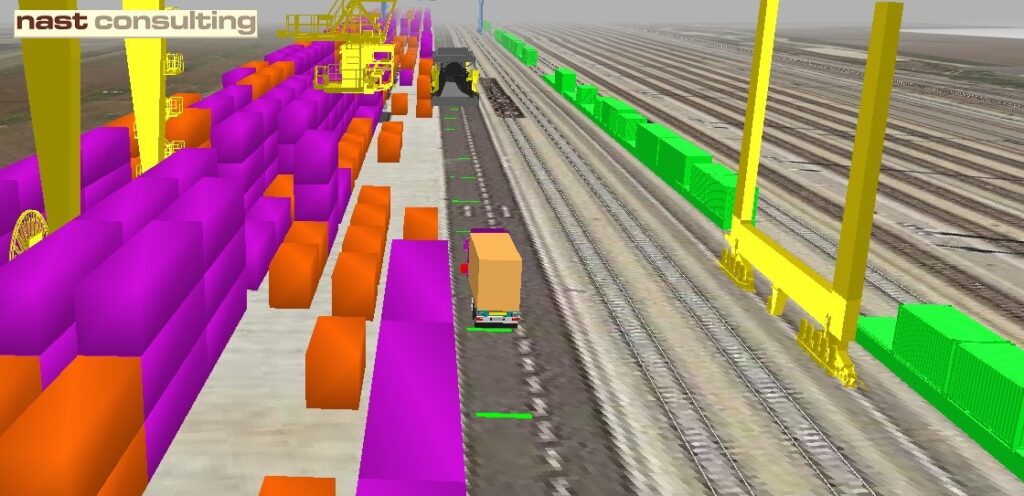Terminal Optimisation
Optihubs is a container terminal optimization tool based on micro simulation algorithms. The catalogue of possible processes includes administrative, operative and logistic processes as well as transport flows and traffic movements.
The model includes elements that are modeled on a macro- and microscopic level.


For visualisation digital background maps are be used such as aerial photography. During the simulation 3D-views can be recorded with detailed models of vehicles and interactions taking into accout trains, cranes, ships, trailers and cargo units. Apart from assessments and optimizations a major benefit is the state-of-the-art visualisation.


The core of the simulation tool is VISSIM (PTV AG) which is adressd by MS Excel VBA (VISSIM-COM). It allows nearly unlimited interaction between MS Excel spreadsheet data, algorithms in Excel scripts and VISSIM data for nearly each element of the program.
MS Excel provides to following input and application data:
- Vehicle inputs (e.g. vehicle type, desired speed and start location, loading, target terminal, driving behaviour settings)
- Simulation settings prior and during each simulation
- Constraints (e.g. checking processes), number and types of cargo-handling machinery (e.g. number of reach stackers)
- Work and job priorities
- Export functions
- Excel VBA Scripts: Core applications and programme routines
Use Cases
- Analysis of traffic queuing caused by heavy vehicles in conjunction with existing traffic signals at existing and planned in- and out gates of multimodal hubs
- Assessment of the impact of heavy load cargo handling in combination with parallel running
“normal” processes - Impact of different train track lengths on cargo handling and key performance indicators
- Analysis of future layouts and changes in the amount of incoming and outgoing cargo
- Effects of increased cargo transport along the inland waterways and its handling in addition
to current handling processes at multimodal hubs - Effects of different in- and out gate configurations regarding traffic flow, dwell times,
processing times, traffic queuing, available loading areas and checking procedures - Comparison of different cargo handling machinery usage in terms of key performance
indicators - Manipulation of different existing and planned cargo unit types and their effects on
container depot areas - Input for process optimization through increased data availability
- Effects of different measures in terms of cargo unit arrivals
Project History and Funding
Optihubs was developed as a standardized inland waterway port optimization tool based on innovative micro simulation algorithms. Logistical, operational and administrative processes and general requirements can be simulated with this tool. Initial project partners were TU Wien, Fachbereich Verkehrssystemplanung (IVS), nast consulting ZT GmbH, Wiener Hafen GmbH & Co KG, Fachhochschule des bfi Wien and TINA International GmbH.
The research project was supported within the 3rd tender of Mobilität der Zukunft of the Austrian research and development program “Mobility of the Future”, which is part of the strategy program “IV2plus – Intelligent traffic systems and services plus”.

